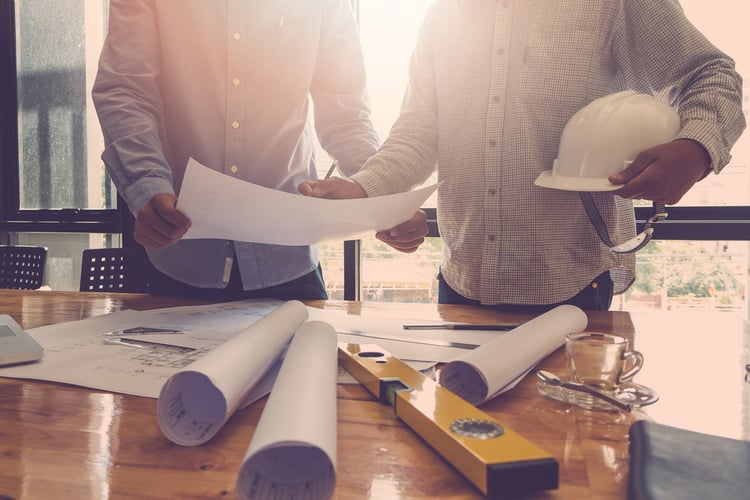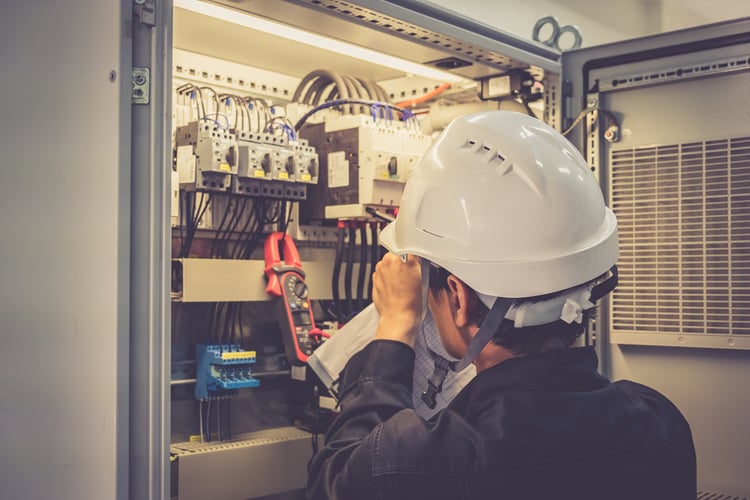Modern technologies are changing lifestyles and business practices, and their use has been accelerated by the COVID-19 pandemic. Technology and social distancing have changed the commercial real estate industry, and some types of buildings are now vacant while others are in high demand.
Many buildings are being repurposed to make them profitable again, as this is much less expensive than rebuilding them from scratch. For example, empty stores are being converted into micro-fulfillment centers or MFCs, which can act as automated urban warehouses in spaces smaller than 10,000 sf.
Are you planning to repurpose a commercial building? Reduce project costs and save time with professional MEP design.
Repurposing a building is an investment decision and there are many factors that can increase or reduce profits. By working with experienced MEP engineers, you can get your project approved by your local building department in a short amount of time. MEP engineers can also propose energy efficiency and water conservation measures while designing an optimal layout that saves material and labor costs. Ultimately, a professional design will be clear to the contractor, helping to avoid change orders and delays during the construction phase.
1) Improve energy efficiency and reduce water consumption

An adaptive reuse project is an excellent opportunity to reduce energy and water consumption, reducing your electricity bills when the building reopens. Because many building features are changed during retrofitting, there is an excellent opportunity to upgrade equipment and other components. This would normally be disruptive to tenants, but no one is bothered while the building is being repurposed.
During a major renovation, building owners can upgrade lighting systems to LED while also installing HVAC units with higher efficiency ratings. Existing plumbing can be replaced with WaterSense products and piping can be carefully inspected for leaks. Energy efficiency and water conservation also provide a marketing advantage, as the idea of paying lower utility bills is attractive to potential tenants.
2) Quick project approval with local building department

Experienced MEP engineers can get your project approved from your local building department with little or no changes. This means you can start repurposing the building sooner and use it for its intended occupancy in less time. For real estate agencies, this also means that rent payments can be collected sooner.
When your design team is unfamiliar with local building codes , project approval can take time, especially if the building department requests many changes. This not only delays construction, but also the reopening date.
3) Optimize MEP layout and reduce project costs

MEP systems use more materials than necessary when their layout is not carefully planned. This can affect components such as air ducts, electrical conduits, cable trays, and plumbing lines. As the total length of these installations increases, their material and labor costs also increase, while at the same time they take longer to install.
Experienced MEP engineers know how to make your layout as efficient as possible, reducing the total cost of the project. By using BIM software for automated calculations, engineers can analyze how design changes affect the scope of work. This way, they can find an MEP layout that minimizes material and labor costs.
4) Avoid expensive change orders during construction

Change orders should be minimized or completely avoided when possible, as they represent additional expense and delays to the project. Depending on the terms of the contract, the cost of change orders may be absorbed by the owner, the contractor, or both. However, the project gets delayed and someone loses money.
MEP engineers can provide clearly specified design documents, avoiding confusion during the construction phase. They can also use BIM software to detect conflicts during the design phase , preventing change orders during construction.
Conclusion
A professional MEP engineering company can help you cost-effectively repurpose a building while recommending upgrades to save water and energy. You can also complete the project faster, avoiding issues like design corrections and change orders. When an adaptive reuse project is completed quickly, the landlord can also begin collecting rent sooner. This is critical for high-demand commercial occupancies such as data centers and warehouses.

